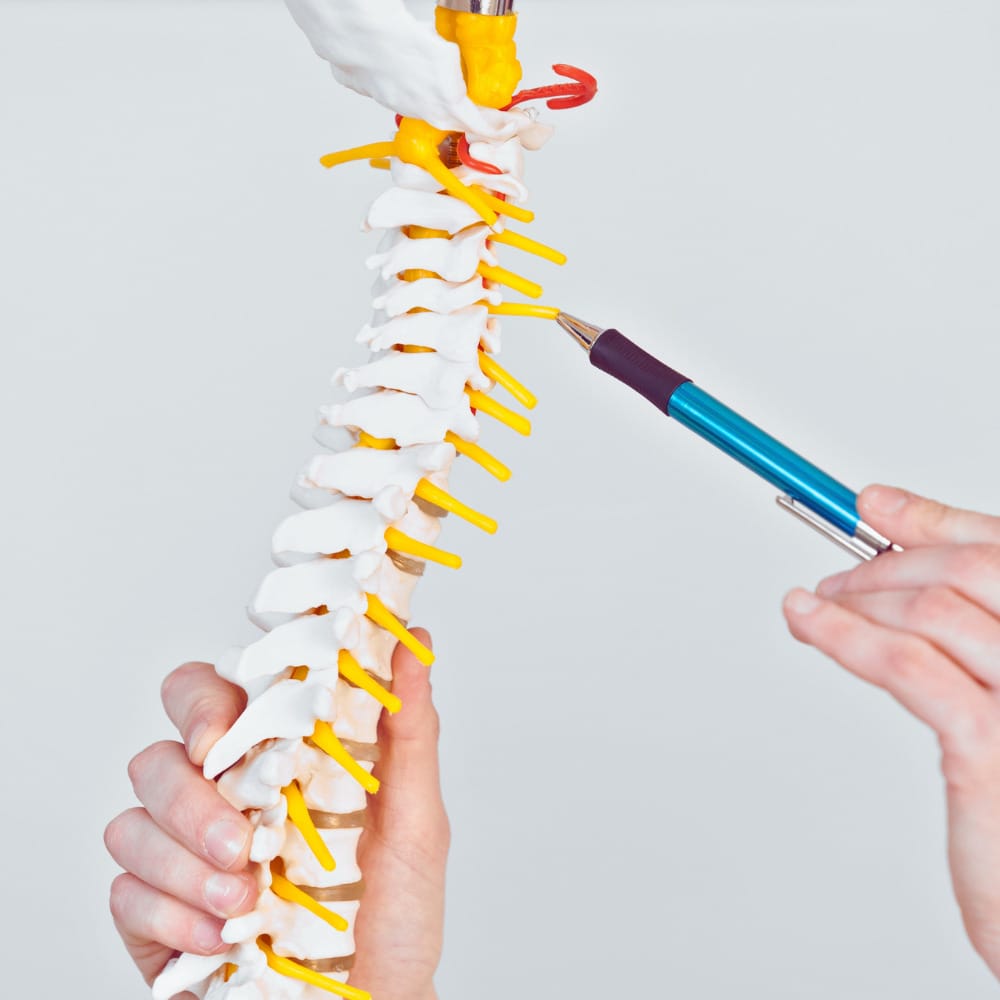Spinal Manipulation: Benefits and Risks Explained
When it comes to treating musculoskeletal pain, spinal manipulation is a popular option that’s been used for many years. Spinal manipulation refers to the manual movement of the joints and muscles in the spine to restore proper alignment and functioning.
Chiropractors, osteopaths, and physical therapists are just some healthcare providers using spinal manipulation in their practice. It has become increasingly popular in recent years as a form of treatment for managing pain and improving overall health.

What is Spinal Manipulation?
Spinal manipulation is a manual therapy technique that applies force to the joints and muscles in the spine, resulting in increased joint movement. It’s commonly used to help relieve pain, reduce stiffness and improve range of motion.
Spinal manipulation increases circulation and provides a stretching effect on the surrounding tissues, which helps break up adhesions, or “knots”, that can form in the muscles. It also helps to reduce inflammation and pain while improving the body’s natural healing processes.
What happens during spinal manipulation?

As mentioned, spinal manipulation involves using hands-on techniques to manipulate the spine and joints to create a therapeutic effect. During a treatment session, your practitioner will use their hands to apply controlled pressure to specific areas of the spine. This technique can be combined with stretching and gentle joint movements in order to increase the range of motion and reduce tension in the area.
Risks and Safety Considerations of Spinal Manipulation
The use of manipulation is a contentious subject, with opinions split on its safety and effectiveness. Evidence suggests that there are some risks associated with this procedure. However, it is generally considered to be a safe and effective form of treatment when used correctly.
A trained and experienced practitioner should only perform manipulation to ensure safety and effectiveness.
Red Flags
Neck manipulation may increase the risk of stroke in some individuals. Therefore, practitioners should use spinal adjustments cautiously in those at an increased risk.
Also, manipulation of the spine should not be performed on those:
- With certain red flags, such as an infection, tumor, or fracture.
- Who has had recent surgery, is pregnant, has uncontrolled high blood pressure, or is in advanced cancer stages.
- Who have fractures, severe osteoporosis, and some types of arthritis.
- It should also not be used near the abdomen during pregnancy.
“How common are side effects of spinal manipulation and can these side effects be predicted?” External Link
Spine Anatomy and Spinal Manipulation
The spine comprises 24 separate bones called vertebrae, connected by facet joints. Spinal manipulations apply pressure to the spinal joint and muscles to improve joint mobility.

The Vertebrae are divided into the following regions:
- Cervical Spine: The top seven vertebrae are located in the neck and support the head.
- Thoracic Spine: The twelve vertebrae that make up the middle region of the spine and are connected to the rib cage.
- Lumbar Spine: The five vertebrae in the lower back support most of the body’s weight.
Facet Joints
The vertebrae are connected by facet joints, which allow for movement between the vertebrae. As mentioned, manipulations (in theory) restore joint mobility and reduce nerve irritation by applying pressure to these facet joints.
Nerve Roots
The spinal nerve roots exit between the vertebrae and travel throughout the body, providing sensation and muscle control. Spinal manipulation can help to reduce pressure on these nerves, allowing for improved movement and reduced pain.
How does spinal manipulation affect the anatomy, as mentioned above?
Spinal manipulation affects the areas of the spine by providing pressure to the facet joints. This helps to reduce muscle spasms, restore spinal joint mobility and improve flexibility. Manipulation also helps to reduce nerve irritation and increase circulation in the affected area. In addition, spinal manipulation can be used to realign vertebrae that have become misaligned due to injury or poor posture.
Spinal Manipulative Therapy Techniques

Spinal manipulative therapy techniques vary depending on the condition and the practitioner. Commonly used methods include:
Manual thrusts
Spinal thrusts are applied to the affected area to restore joint movement and reduce nerve irritability. Health care providers can deliver spinal thrusts with either an open or closed hand.
Joint articulation
Joint articulation techniques involve the gentle application of pressure to specific joints to restore joint mobility. It includes the use of specific movements and angles to improve joint function.
High-velocity thrusts (HVTs)
High-velocity thrusts involve a sudden, forceful joint manipulation to improve the range of motion. This technique is usually used for more severe cases and can be uncomfortable for some patients.
Manual traction
Manual traction is a technique used to stretch and mobilize the spine gently. It involves applying slow, steady pressure on the affected area to improve the range of motion and reduce pain.
Soft tissue manipulations
Soft tissue manipulation involves applying pressure to muscles, ligaments, and tendons around the spine to relieve tension, improve the range of motion, and reduce pain.
Spinal manipulation techniques are often combined with other forms of physical therapy to achieve optimal results.
Common Conditions Treated with Spinal Manipulation
Spinal manipulation is an effective treatment for many types of musculoskeletal pain, including neck and back pain, sciatica, muscle strains, and headaches. It helps relieve muscle tension, improve range of motion and flexibility, reduce inflammation and swelling, restore joint alignment and mobility and promote proper posture. Spinal manipulation also helps to correct misalignments in the spine that can lead to chronic pain or discomfort.
Chronic Low Back Pain

Low back pain is one of the most common conditions treated with spinal manipulation. It can help reduce pain and increase function in chronic low back pain patients. In addition, spinal manipulation helps to improve joint mobility and reduce muscle tension, which can help to ease symptoms associated with low back pain.
Acute and Chronic Neck Pain
Neck pain is another common condition that can be treated with spinal joint manipulation. It helps to reduce muscle tension and improve joint mobility, which can help to reduce neck pain and increase the range of motion in the neck. It may also help to reduce nerve irritability and decrease inflammation.
Headaches
Headaches are another condition that is treated with spinal manipulation. Spinal manipulation is often used to treat tension headaches and cervicogenic headache pain caused by muscle tension in the neck or upper back. Spinal manipulation helps to reduce muscle tension and improve joint mobility, which can help to reduce pain associated with headaches.
Spinal Manipulation FAQs
Who can perform spinal manipulation?
Manipulation is typically performed by a chiropractor, osteopath, physical therapist, or medical doctor. A trained and experienced practitioner should only perform spinal adjustments to ensure safety and effectiveness.
Is spinal manipulation safe?
Spinal manipulation is generally safe when performed by a qualified practitioner. Spinal manipulation can cause minor discomfort initially, but it should not be painful. However, manipulation may also come with certain risks, such as increasing the risk of stroke in some individuals.
Who can perform spinal manipulation?
Manipulation is typically performed by a chiropractor, osteopath, physical therapist, or medical doctor. A trained and experienced practitioner should only perform spinal adjustments to ensure safety and effectiveness.
Are there adverse events associated with spinal manipulation?
Spinal manipulation is generally safe when performed by a qualified practitioner. However, there is a risk of adverse events such as widening the disc space and nerve irritation. Therefore, discussing any concerns with your practitioner before beginning treatment is essential. With all things related to treatment, you must feel safe and secure when undertaking treatment.
How often should I receive spinal manipulation?
The frequency of spinal manipulation will depend on the individual and the condition being treated. Sessions may be performed once or multiple times per week, depending on the person’s needs. Generally, a course of treatment is recommended for best results.
How do different modalities apply manipulative techniques?
Spinal manipulation is incorporated into a variety of modalities.
Chiropractic Manipulation uses hands-on techniques such as the “high-velocity, low-amplitude” technique and massage to manipulate the joints.
Osteopathy uses manual pressure to restore normal movement and reduce pain.
Physical Therapy incorporates spinal manipulation with other treatments such as exercise, therapeutic massage, and heat/cold therapy. Spinal manipulation can also be used in medical practice to address specific conditions.
Do you use different techniques for different parts of the spine?
Spinal manipulation techniques vary depending on the part of the spine being treated. Techniques are tailored to each individual’s needs and condition. Spinal manipulation may be used to treat specific vertebrae in the neck (cervical spine) or back (Thoracic Spine and/or Lumbar Spine), as well as the entire spine.
Final Thoughts
Spinal manipulation is an effective treatment for various conditions, including low back pain and neck pain. It works by applying pressure to the joints and muscles to improve joint mobility and reduce pain levels. A qualified practitioner should perform spinal manipulation therapy to ensure safety and effectiveness.
Manipulation may also come with certain risks and safety considerations, so discussing any potential concerns with your practitioner before beginning treatment is essential. However, spinal manipulation can provide effective pain relief and improved joint functioning when used as part of a comprehensive treatment plan.
If you have any further questions, please consult with your doctor for more information. Spinal manipulation may be an effective way to reduce pain and improve mobility. Still, discussing the risks and benefits with a qualified healthcare professional before beginning treatment is important.
PLEASE NOTE
PostureGeek.com does not provide medical advice. This information is for educational purposes only and is not intended to be a substitute for professional medical attention. The information provided should not replace the advice and expertise of an accredited health care provider. Any inquiry into your care and any potential impact on your health and wellbeing should be directed to your health care provider. All information is for educational purposes only and is not intended to be a substitute for professional medical care or treatment.
